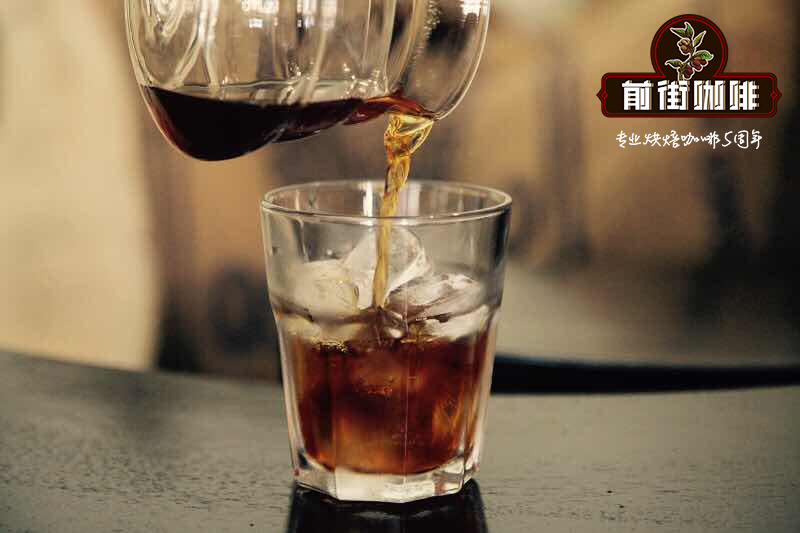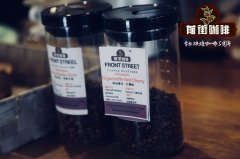2018 what is the development trend of coffee? How did the coffee wave change?

Professional coffee knowledge exchange more coffee bean information please follow the coffee workshop (Wechat official account cafe_style)
The coffee industry is constantly updated, as you can see from Starbucks on the streets or its latest Ying Jixing Frappuccino. There is no doubt that the United States is a country with "severe coffee addiction", but when it comes to coffee consumption, Finland, Norway and the Netherlands can also have a place in the world coffee market.
In this ubiquitous world of coffee, which direction will the coffee environment develop in 2018?
The third wave of coffee "the second wave of coffee"-coffee from fast eating to high-quality, customers began to pay attention to the quality of coffee. Now, in the "third wave", customers pay more attention to the way they drink coffee and the knowledge and stories behind the coffee. (see the end of the article for a little knowledge of "three waves of Coffee".)
Here are some of the features of the "third wave": direct trade, in which roasters buy coffee directly from farmers, a trend that is bound to become more pronounced in 2018. In addition to avoiding raw beans passing through middlemen, direct trade can better ensure the quality of coffee, the sustainable development of coffee industry and the innovation of coffee extraction technology. therefore, the purchase and sales price of coffee can also be more satisfactory.
Customer experience, whether it is the roaster or the coffee shop, in 2018, they are absolutely concerned about the consumer experience. From collecting feedback to spreading coffee knowledge and telling the story of coffee, the relationship between consumers and coffee will become closer in the new year.
In the United States, the fastest growing coffee consumption power is definitely the younger generation (Gen Y, 13-16) and the post-millennium generation, who account for 44% of the country's total coffee consumption. Young people are more willing to try new tastes and ideas, which promotes the continuous innovation of coffee products and menus.
Sugar cream cappuccino is still hot, and roasters and coffee retailers will try their best to optimize the taste of coffee and add sweet and creamy drinks to the menu to attract the younger generation.
Mushroom coffee, of course, young people pay great attention to a healthy diet, they flock to all kinds of "super food". Can coffee also become a "superfood"? Mushroom coffee is fine! Buyers of Whole Foods think the coffee will be a hit in 2018.
Mushroom coffee is a popular way of drinking coffee this year. Coffee is mixed with wild mushroom powder, and many people use Ganoderma lucidum, which is the first to become popular abroad. (this sounds a bit like Maca coffee.)
Cold coffee is still popular. Cold coffee is still the mainstream of the market.
Unlike traditional iced coffee, cold-extracted coffee is directly extracted from coffee with cold water. the sour and bitter taste of coffee is softer, and it can be produced in large quantities at once, so it is definitely a win-win choice for operators and consumers.
Sparkling coffee thanks to La Croix, they enrich the products of flavored carbonated drinks. In 2018, sparkling coffee will be the latest trend.
Making sparkling coffee is as simple as mixing tonic water with espresso, which is already available in Saint Frank in San Francisco and Everyman Espresso in New York.
Three waves of coffee three waves of coffee, since Nestl é launched the first packet of instant coffee, the coffee industry has experienced three waves.
The first wave (1940-1960)
Instant coffee, the rise of Nestle Coffee in 1938, Nestle launched the instant coffee brand, turning agricultural products into standardized products for the first time. By 1974, Nestle coffee accounted for 30% of the global coffee market. Unfortunately, Nestl é began to encounter bottlenecks and the instant coffee market came to a standstill.
The second wave (1966-2000)
Starbucks reached its peak in 1971, the year after Nestl é launched its Nespresso program, three students from the University of San Francisco got together to start Starbucks, which aims to make people drink good coffee, which set off the second wave of coffee.
At that time, the instant coffee on the market was overextracted coffee, which tasted bitter and rough, and could not be swallowed without the addition of cream and sugar as well as a lot of artificial colors. Starbucks uses heavily roasted Arabica beans, and people can drink high-quality coffee without adding sugar and cream.
The third wave (2003-present)
Coffee aestheticization, the rise of boutique coffee the third coffee wave rose around 2003.
People in this wave pursue the ultimate experience and social fairness even more. The representatives at this time are the familiar Blue Bottle Coffee (Blue bottle Coffee), IntelligentsiaCoffee & Tea (intellectual Coffee), and Chicago roaster "intellectual" (IntelligentsiaCoffee).
Important Notice :
前街咖啡 FrontStreet Coffee has moved to new addredd:
FrontStreet Coffee Address: 315,Donghua East Road,GuangZhou
Tel:020 38364473
- Prev

How did seesaw enter the coffee market? Seesaw brand introduction?
Professional coffee knowledge exchange more coffee bean information Please pay attention to the coffee workshop (Wechat official account cafe_style) boutique coffee finally no longer feels untouchable the future market share is also slowly expanding according to incomplete statistics, there are now more than 20,000 coffee shops across the country, mainly located in first -, second and third-tier cities. Starbucks alone has opened in more than 120 cities.
- Next

The evolution of cafes, the culture of cafes?
Professional coffee knowledge exchange more coffee bean information please follow the coffee workshop (Wechat official account cafe_style) the soul of the city, may be hidden in the coffee shop. In 1686, Francois Procope, an Italian Frenchman, opened his own-named Le Procope Cafe near the Opera House in Paris, although it was not the first in France.
Related
- What brand of black coffee is the most authentic and delicious? what are the characteristics of the flavor of the authentic Rose Summer Black Coffee?
- Introduction to the principle and characteristics of the correct use of mocha pot A detailed course of mocha pot brewing coffee is described in five steps.
- Which is better, decaf or regular coffee? how is decaf made?
- How much is a bag of four cat coffee?
- How about four Cat Coffee or Nestle Coffee? why is it a cheap scam?
- Which is better, Yunnan four Cats Coffee or Nestle Coffee? How about cat coffee? is it a fake scam? why is it so cheap?
- How about Cat Coffee? what grade is a hoax? which instant coffee tastes better, four Cat Coffee, Nestle Coffee or G7 coffee?
- Process flow chart of coffee making-Starbucks coffee making process what coffee tastes good at Starbucks
- The top ten best coffee beans in the world Rose summer coffee or Tanzanian coffee tastes good
- Yunnan four cat coffee is good to drink?_four cat coffee is a big brand? four cat blue mountain coffee is fake?

